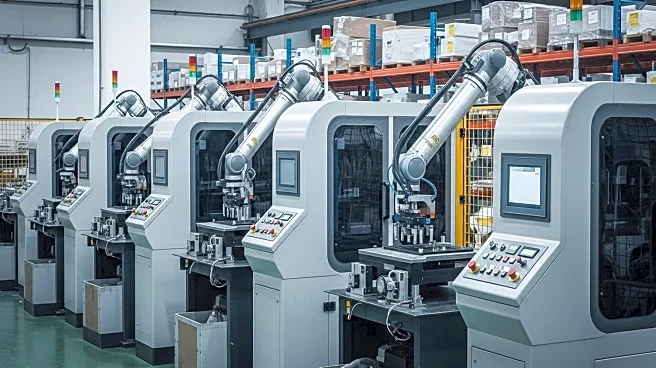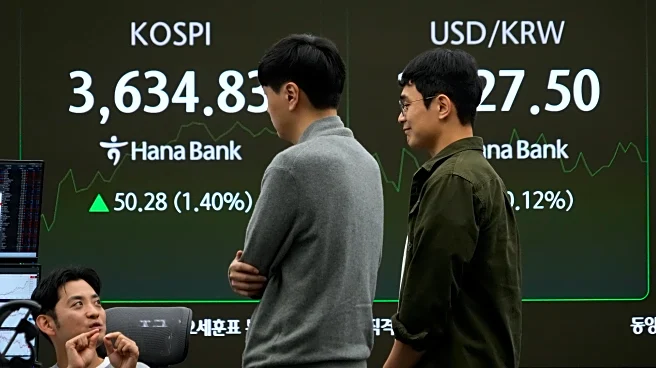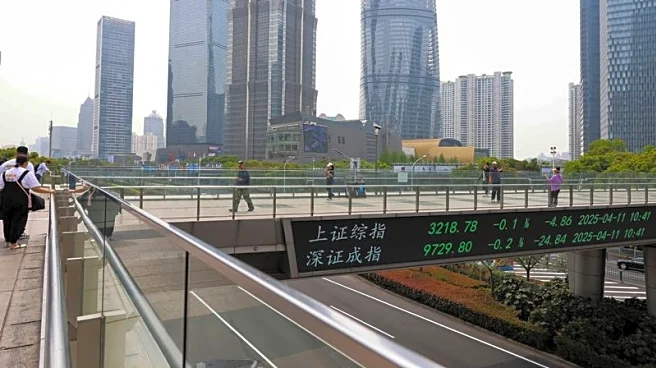What's Happening?
Chinese factories have significantly increased their purchasing activities in September, boosting Asian supply chains to their busiest level since June 2022. The GEP Global Supply Chain Volatility Index report indicates that the Asian index rose by 0.09 points to -0.25, driven by China's increased input purchases to facilitate production and sales growth. In contrast, North American supply chains have lost momentum, with the index score dropping to -0.19 from -0.03 in August. Manufacturers in North America have pointed to tariff-related delays and economic outlook concerns as factors constraining purchasing and reducing inventory buffers. European supply chains also remain underused, with the index score slightly dropping to -0.45 from -0.42, as countries like Germany, France, and Italy reduce purchasing and stockpiles.
Why It's Important?
The contrasting supply chain activities between Asia and North America highlight the ongoing global trade uncertainties and the impact of tariff pressures. The increase in Chinese purchasing activities suggests a strategic move to strengthen production capabilities, potentially giving Asian manufacturers a competitive edge. Meanwhile, the slowdown in North American supply chains could affect various industries reliant on timely inputs and inventory management, leading to potential disruptions in production and sales. The situation underscores the need for supply chain leaders to adapt their strategies to navigate the new normal of higher prices, tariff pressures, and slower growth.
What's Next?
Supply chain leaders are encouraged to execute revised strategies to cope with the current global trade environment. The report suggests that companies should focus on enhancing resilience and efficiency through AI adoption and regionalization strategies. As tariff pressures and economic uncertainties persist, businesses may need to reassess their supply chain models to mitigate risks and optimize operations.
Beyond the Headlines
The report indicates a decrease in supply shortages and challenges in sourcing vendors for commodities and components, suggesting a potential stabilization in supply chain operations. However, the ongoing tariff pressures and economic uncertainties may continue to pose challenges for global supply chains, requiring companies to remain vigilant and adaptable.













